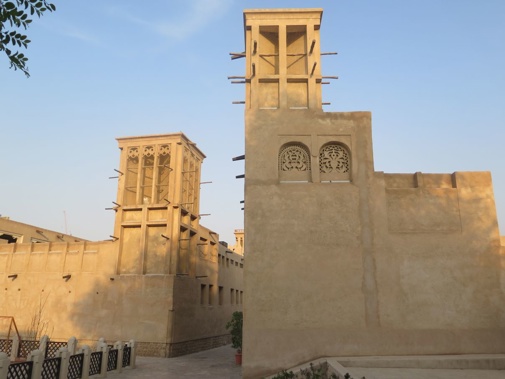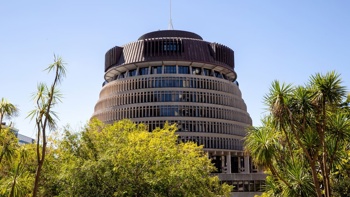
A stopover in Dubai usually entails snatching a flavour of the emirate’s rapacious appetite for razzle-dazzle construction and consumerism.
The arsenal of head-turning new sights and mega-attractions is constantly being added to.
But beyond the unbridled bling, the iconic skyscrapers, serenading fountains and mesmerising shopping malls, staking out a taste of authentic old-time Dubai is a refreshing and enriching antidote to the sugar-rush of her contemporary and colossal confections.
If you’ve ever wondered why Dubai doesn’t seem to have many old buildings, its primarily because the indigenous population were traditionally Bedouin, leading a semi-nomadic lifestyle in goat-haired tents.
The early pearl divers and commercial fishermen lived in flimsy barasti (palm-frond huts) along Dubai Creek, which were similarly not built with longevity in mind. The city’s oldest structure, constructed in 1787, is Al Fahidi Fort, in the Bur Dubai district. It’s well worth a visit because it’s been repurposed as Dubai Museum, brimming with informative displays depicting the city’s fishing village origins and timelines showing its meteoric transformation into a world-leading business and tourism global hub. One interesting artefact is the first written reference to the trading port, penned in 1580 by Venetian jeweller Gasparo Balbi who passed through seeking pearls.
From the museum, it’s a five minute stroll to the nearby district of Bastakiya, the old Persian quarter. This atmospheric district is studded with handsome sand and coral houses topped with Barjeel wind towers, an old-style form of air-conditioning that has gracefully withstood the test of time. These enchanting old pearl merchant houses were constructed by Persian businessman from Bastak, southern Iran – hence the name, Bastakiya.
Thankfully the government rescued these historic houses about a decade ago, because they were crumbling and falling into total disrepair. Many have now been restored or reconstructed, housing inviting art galleries, cafés and boutique hotels.
In Dubai’s cooler months (November to March), Bastakiya hosts markets in its narrow lanes. Cross the Creek to visit two other heritage nuggets set in splendid and adjoining old courtyard buildings. Al-Ahmadiya School was Dubai’s first school, built in the 1890s, and now preserved as a surprisingly fascinating museum of education. Amongst the trove of treasures are the century old learning mats, made from plam-tree leaves, t hat the students used to sit on.
Next door is Heritage House, once the residence of one of Dubai’s most famous pearl merchants, Sheik Ahmed bin Dalmouk. Dating from the 1890s, the classically designed central courtyard and the array of rooms are beautifully decorated in period style with life-size costumed mannequins. It is widely acclaimed as one of the best examples of a traditional Emirati family residence, providing extensive insights into typical family life.
After such a virtuous dollop of heritage appreciation, treat yourself to a frolic through Deira’s traditional souks. Start at the glimmering Gold Souk, universally recognised as one of the “cheapest” places to purchase gold jewellery, if you’re prepared to haggle long and hard.
From there, follow the winding lanes of merchant stalls, brimming with souvenirs and trinkets to the aromatic rhapsody of the Spice Souk. This is my favourite souk in Dubai, where you’ll be warmly greeted by convivial vendors who will be only too happy to whiz you through an ambrosial A to Z beginner’s guide to spices.
At the heart of old Dubai, Al Khor (the Creek) is the photogenic saltwater inlet that continues to be a humming thoroughfare for traditional wooden dhows and the occasional ship. It’s also where you can rejoice in one of the most authentic and inexpensive Dubai experiences: riding an abra, one of the traditional water taxis. Still heavily used by the locals, they’ve been plying Deira Creek for centuries, and are the scene-setter for some of the city’s most enchanting photo opportunities.
If your head is spinning after indulging in a day of Dubai’s sensory rush, come here for a dose of simplicity. Right on sunset, jump on an abra, and take a ride across the waterway as the sun drops and drips all over Dubai like a big ripe peach, silhouetting the city’s soaring minarets and fabled skyscrapers.
Feeling peckish? For a truly out-of-the-box experience, head to Al Dhiyafah Road , Dubai’s cheap-eats street which primarily caters to the construction crews of imported labourers. Very close to Jumeirah Mosque, you could not get a more non-touristy experience, on this frenetic foodie street. The scene is all about Lebanese, Persian, Indian and Pakistani cuisine, making it the go-to address for super cheap, super tasty curries and shawarma. The most well-known “secret” eatery is undoubtedly Ravi’s restaurant, which enjoys cult status among Pakistani expats in the city. Ravi’s butter chicken is a heart-stopper.
Before you depart Dubai, try your hand at an Arabian adaptation of the cappuccino. Introducing the camelccino. It’s Arabic coffee, fluffed up with rich, sweet smooth camel’s milk.
And it’s surprisingly good.
Take your Radio, Podcasts and Music with you









